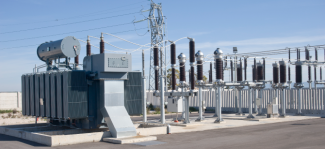Distributed generation and the expected growth of microgrids has many utilities stymied. Some would react to this in fear, grasping all the more tightly to the status quo, but the most successful utilities will be those that work proactively to seize new opportunities and tackle new challenges head on. PEER, a new rating system administered by GBCI, is based on a microgrid architecture framework that can help utilities and consumers on the path towards high-performance, sustainable power systems.
A microgrid is a local group of electricity generators and consumers. Still connected to the bulk—or centralized—grid, but clearly bounded as a subcomponent of that bulk grid, a microgrid can be defined by a range of owners on a range of scales. A utility microgrid might be defined by a geographic or functional boundary where the utility wants to focus investments and performance improvements. A private microgrid might be a campus with local power generation and thermal distribution systems. Even a resilient building, capable of generating its own power in the case of an extended grid outage, might be considered a microgrid. The important thing is that a microgrid can operate with and parallel to the bulk grid and has the capability to balance generation and demand within its boundaries.
Now, imagine a rich, interconnected network of microgrids defined by the cities, campuses, and major developments that they serve. Regardless of ownership or scale, the microgrid architecture framework divides vast utility service territories into a network of smaller, dynamic, customer-centric nodes and establishes local ownership and accountability for the capabilities, issues, and outcomes that matter to the consumers. Rather than leaving utilities behind, this transformation to a microgrid framework will be led by the utilities that embrace their new role as integrators and optimizers.
Microgrid Benefits
For a range of reasons including renewed focus on environmental efficiency and safety concerns associated with extreme weather, grid operators will increasingly depend on support from microgrids. A robust network of microgrids would do the following.
- improve grid resiliency
- establish a price responsive grid
- ensure power to critical services during grid outages
- enable utilities to leverage customer grid services to the ratepayer’s advantage
Microgrids leverage distributed energy resources to supplement existing transmission and distribution systems. Because these resources are smaller and located at or near the “center of utilization”, they offer efficient and locally-responsive support to traditional power plants. When the grid is stressed or power prices are high, these microgrids add value to the grid and consumers by offering distributed energy, dynamic price response and demand response for improved reliability and power quality and lower peak power costs.
At the local level, the integration of load response assets within a microgrid also enables on-demand islanding: the capability to shift to local power sources during outages. Microgrids also emerge as key components of a sustainable grid by protecting critical facilities and life safety and supporting recovery operations during grid outages. Additionally, microgrids can provide capacity, voltage support, reactive power, and frequency regulation support.
In a microgrid architecture framework, the utility business model is strengthened by the economic development that results from improved bulk grid performance. Utilities serve as the optimizer and enabler for customer engagement, integrating customer assets to stabilize the grid, and leveraging microgrid architecture to create local partnerships and drive joint investment in grid improvements and new programs and services.
In addition to assessing customer contribution and best practices in engaging customers as a valuable resource to grid operators, PEER also defines high performance in power system reliability, environmental outcomes, and operational effectiveness. Microgrids are a key component of PEER’s vision of a cleaner, safer, and more sustainable electricity system.
